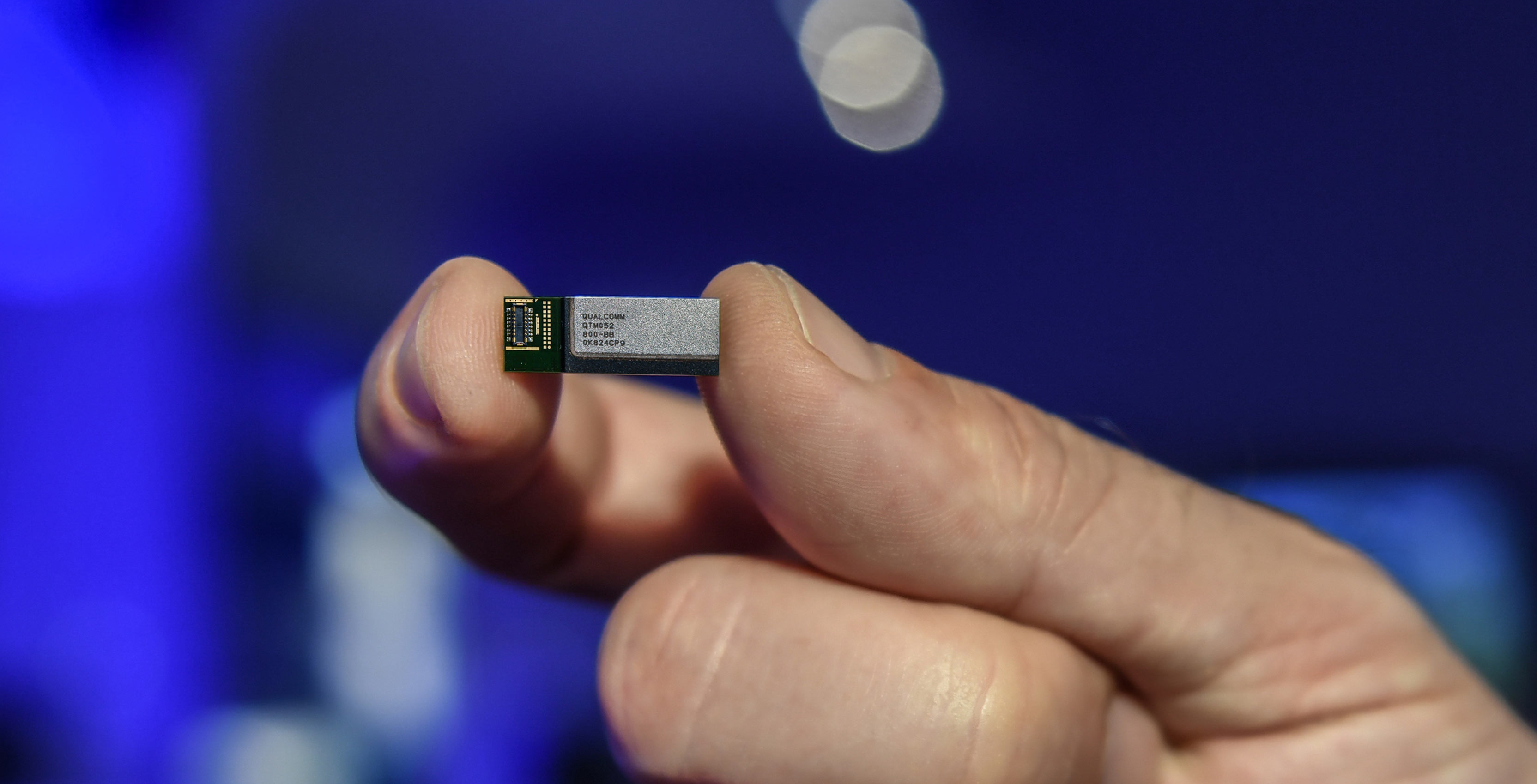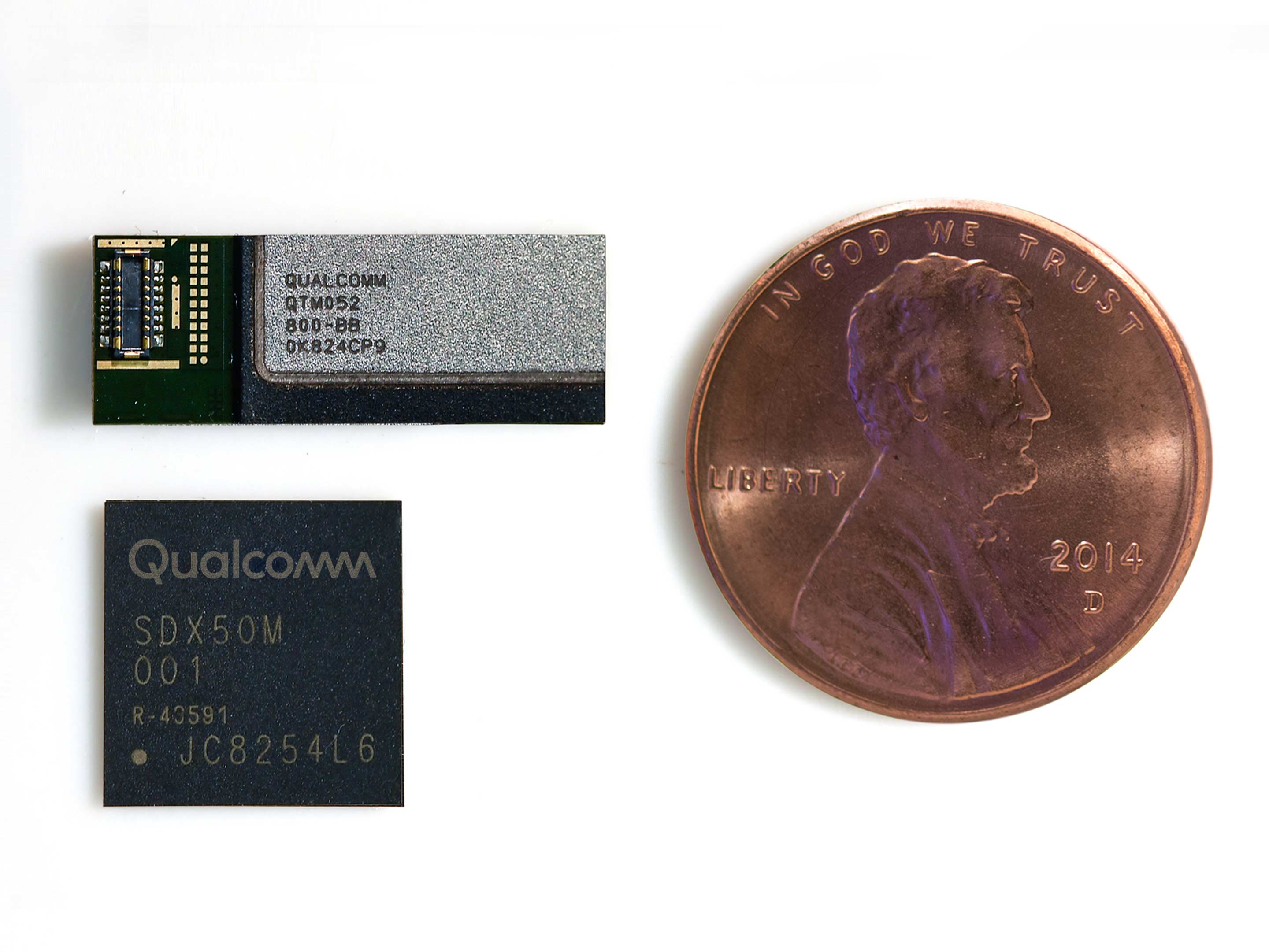
On Monday morning, Qualcomm announced two new 5G antenna modules: the mmWave-capable QTM052 and sub-6 GHz QPM56xx.
Of the two, Qualcomm is positioning the QTM052 as a significant technological breakthrough.
With the QTM052, the company was able to design and manufacture a mmWave antenna small enough to fit into a smartphone. According to Sherif Hanna, director of 5G product marketing at Qualcomm, that’s a feat that many experts thought would be impossible.
What’s more, the array is small enough that Qualcomm was able to fit not just one but four arrays, one along each edge of a smartphone’s bezels, into a reference design it created for OEMs. This redundancy is important, as it allows a smartphone equipped with multiple QTM052 antenna arrays to send mmWave radio signals even when one or more of the antennas are blocked — mmWave radiowaves can be temperamental, with even the slightest obstruction capable of dispersing them.
Additionally, with the help of its X50 5G modem, Qualcomm says the QTM052 is capable of overcoming many of the range and reliability issues related to 5G mobile connectivity.
The result is a wireless one-two punch that is both fast and reliable.

“It was important for us to do this because mmWave is such a new technology for everyone involved,” said Hanna in a phone interview with MobileSyrup.
“It impacts every aspect of a device’s design — from the industrial design and form factor to the thermals and materials. We felt compelled to give OEMs an all-in-one solution that they can take and integrate into their own devices, helping them get over the hump of this very complex design challenge to get mmWave working in mobile devices.”
In lab tests, a prototype smartphone Qualcomm outfitted with multiple QTM052 antenna array and an X50 modem was able to achieve download speeds of 4.5 Gigabits per second (Gbps). In real-world use, Qualcomm estimates the same combo will be capable of putting up average download speeds of 1.4Gbps. Meanwhile, the company estimates the sub-6 GHz QPM56xx antenna array will average download speeds between 500-600 Megabits per second (Mbps).
In both cases, the two new antenna arrays will allow upcoming smartphones to achieve download and upload speeds that are significantly faster than even the most advanced currently available LTE smartphone can muster.
According to Qualcomm, both antenna arrays are already in the hands of smartphone makers and network operators. The company says it expects the first device with the QTM052 to ship in early 2019.
MobileSyrup may earn a commission from purchases made via our links, which helps fund the journalism we provide free on our website. These links do not influence our editorial content. Support us here.


